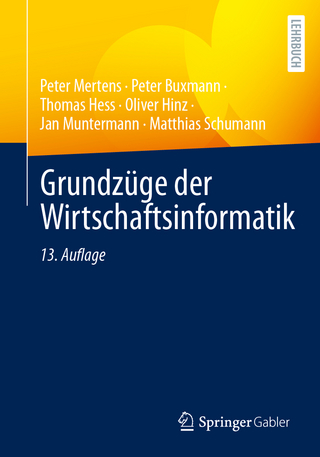
Mathematics with Applications: Pearson New International Edition
Pearson Education Limited (Verlag)
978-1-292-02206-2 (ISBN)
- Titel erscheint in neuer Auflage
- Artikel merken
This book presents the content and applications in an accessible manner while maintaining an appropriate level of rigor. The authors proceed from familiar material to new, and from concrete examples to general rules and formulas. This edition retains its focus on real-world problem solving, but has been refreshed with a wealth of new data in the examples and exercises-39% of the 623 examples are new or revised, and 28% of the 5,288 exercises are new or revised. The Table of Contents lends itself to tailoring the course to meet the specific needs of students and instructors.
Chapter 1: Algebra and Equations
1.1 The Real Numbers
1.2 Polynomials
1.3 Factoring
1.4 Rational Expressions
1.5 Exponents and Radicals
1.6 First-Degree Equations
1.7 Quadratic Equations
Chapter 1 Summary
Chapter 1 Review Exercises
Case Study 1: Consumers Often Defy Common Sense
Chapter 2: Graphs, Lines, and Inequalities
2.1 Graphs
2.2 Equations of Lines
2.3 Linear Models
2.4 Linear Inequalities
2.5 Polynomial and Rational Inequalities
Chapter 2 Summary
Chapter 2 Review Exercises
Case Study 2: Using Extrapolation to Predict Life Expectancy
Chapter 3: Functions and Graphs
3.1 Functions
3.2 Graphs of Functions
3.3 Applications of Linear Functions
3.4 Quadratic Functions
3.5 Applications of Quadratic Functions
3.6 Polynomial Functions
3.7 Rational Functions
Chapter 3 Summary
Chapter 3 Review Exercises
Case Study 3: Architectural Arches
Chapter 4: Exponential and Logarithmic Functions
4.1 Exponential Functions
4.2 Applications of Exponential Functions
4.3 Logarithmic Functions
4.4 Logarithmic and Exponential Equations
Chapter 4 Summary
Chapter 4 Review Exercises
Case Study 4: Characteristics of the Monkeyface Prickleback
Chapter 5: Mathematics of Finance
5.1 Simple Interest and Discount
5.2 Compound Interest
5.3 Annuities, Future Value, and Sinking Funds
5.4 Annuities, Present Value, and Amortization
Chapter 5 Summary
Chapter 5 Review Exercises
Case Study 5: Continuous Compounding
Chapter 6: Systems of Linear Equations and Matrices
6.1 Systems of Two Linear Equations in Two Variables
6.2 Larger Systems of Linear Equations
6.3 Applications of Systems of Linear Equations
6.4 Basic Matrix Operations
6.5 Matrix Products and Inverses
6.6 Applications of Matrices
Chapter 6 Summary
Chapter 6 Review Exercises
Case Study 6: Matrix Operations and Airline Route Maps
Chapter 7: Linear Programming
7.1 Graphing Linear Inequalities in two Variables
7.2 Linear Programming: The Graphical Method
7.3 Applications of Linear Programming
7.4 The Simplex Method: Maximization
7.5 Maximization Applications
7.6 The Simplex Method: Duality and Minimization
7.7 The Simplex Method: Nonstandard Problems
Chapter 7 Summary
Chapter 7 Review Exercises
Case Study 7: Cooking with Linear Programming
Chapter 8: Sets and Probability
8.1 Sets
8.2 Applications of Venn Diagrams
8.3 Introduction to Probability
8.4 Basic Concepts of Probability
8.5 Conditional Probability and Independent Events
8.6 Bayes' Formula
Chapter 8 Summary
Chapter 8 Review Exercises
Case Study 8: Medical Diagnosis
Chapter 9: Counting, Probability Distributions, and Further Topics in Probability
9.1 Probability Distributions and Expected Value
9.2 The Multiplication Principle, Permutations, and Combinations
9.3 Applications of Counting
9.4 Binomial Probability
9.5 Markov Chains
9.6 Decision Making
Chapter 9 Summary
Chapter 9 Review Exercises
Case Study 9: QuickDraw (R) from the New York State Lottery
Chapter 10: Introduction to Statistics
10.1 Frequency Distributions
10.2 Measures of Central Tendency
10.3 Measures of Variation
10.4 Normal Distributions
10.5 Normal Approximation to the Binomial Distribution
Chapter 10 Summary
Chapter 10 Review Exercises
Case Study 10: Statistics in the Law-The Castaneda Decision
Chapter 11: Differential Calculus
11.1 Limits
11.2 One-sided Limits and Limits Involving Infinity
11.3 Rates of Change
11.4 Tangent Lines and Derivatives
11.5 Techniques for Finding Derivatives
11.6 Derivatives of Products and Quotients
11.7 The Chain Rule
11.8 Derivatives of Exponential and Logarithmic Functions
11.9 Continuity and Differentiability
Chapter 11 Summary
Chapter 11 Review Exercises
Case Study 11: Price Elasticity of Demand
Chapter 12: Applications of the Derivative
12.1 Derivatives and Graphs
12.2 The Second Derivative
12.3 Optimization Applications
12.4 Curve Sketching
Chapter 12 Summary
Chapter 12 Review Exercises
Case Study 12: A Total Cost Model for a Training Program
Chapter 13: Integral Calculus
13.1 Antiderivatives
13.2 Integration by Substitution
13.3 Area and the Definite Integral
13.4 The Fundamental Theorem of Calculus
13.5 Applications of Integrals
13.6 Tables of Integrals
13.7 Differential Equations
Chapter 13 Summary
Chapter 13 Review Exercises
Case Study 13: Bounded Population Growth
Appendixes
Appendix A: Graphing Calculators
Appendix B: Tables
Table 1: Formulas from Geometry
Table 2: Areas under the Normal Curve
Table 3: Integrals
Answers to Selected Exercises
Index of Applications
Index
| Verlagsort | Harlow |
|---|---|
| Sprache | englisch |
| Maße | 216 x 276 mm |
| Gewicht | 3084 g |
| Themenwelt | Schulbuch / Wörterbuch |
| Mathematik / Informatik ► Mathematik ► Finanz- / Wirtschaftsmathematik | |
| ISBN-10 | 1-292-02206-X / 129202206X |
| ISBN-13 | 978-1-292-02206-2 / 9781292022062 |
| Zustand | Neuware |
| Informationen gemäß Produktsicherheitsverordnung (GPSR) | |
| Haben Sie eine Frage zum Produkt? |
aus dem Bereich



